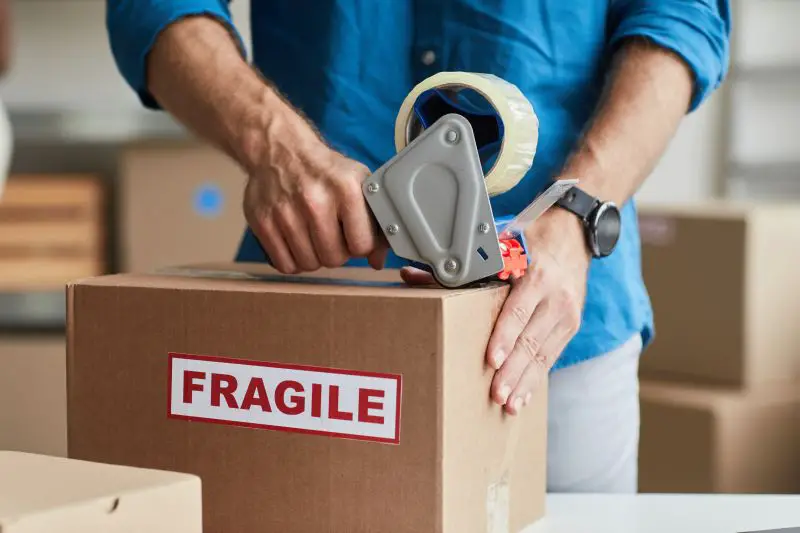Click here to get this post in PDF
This article contains affiliate links. For more info, see disclosure.
Shipping fragile items is nerve-wracking. Whether you’re sending a delicate crystal vase or an intricately designed collectible, ensuring it arrives intact requires careful planning and execution.
Damages during transit lead to monetary losses and harm your reputation if you’re running a business. Fortunately, there are proven strategies to safeguard your fragile products during shipping. Read on for practical packing and shipping tips for fragile products that prioritize safety and efficiency.
Invest in Quality Packing Materials
The foundation of secure shipping lies in the materials you use for packing. Cheap or flimsy materials increase the risk of damage during transit. Start with sturdy, corrugated boxes that match the size of the item without leaving too much excess space.
Choose high-quality bubble wrap, packing peanuts, and cushioning foam to add protective layers. Each material has a unique function, with bubble wrap preventing scratches and packing peanuts adding shock absorption.
For an extra layer of protection, consider using innovations in packaging for fragile products, such as self-sealing bubble pouches or foam-in-place solutions. These advanced materials save time and provide superior protection to your items.
Wrap Every Item Separately
If you’re shipping multiple fragile items in one box, wrapping them individually is nonnegotiable. Use bubble wrap or thick packing paper to cover each item thoroughly, paying attention to all sides. Secure the wrapping with tape to prevent it from unrolling during transit.
For glassware or ceramics, place extra padding around corners and edges as these areas are most vulnerable to impact. By isolating each piece, even if there’s movement within the package, items won’t collide and cause accidental breakage.
Fill Every Empty Space in the Box
Empty spaces are a recipe for disaster when shipping fragile products. Filling gaps within the box prevents items from shifting during transport, which is a leading cause of breakage. Use packing peanuts, air pillows, or crumpled paper to fill every void in the box.
For heavier items, foam inserts are a more effective solution, as they provide cushioning and structure. Test your packaging by gently shaking the box once closed. If you hear movement, add more filler until everything inside remains snug and secure.
Clearly Label the Package
Labeling your package as “fragile” will alert handlers to its contents’ delicate nature. Use large, bold fonts and place labels on every side of the box, leaving no room for oversight.
Including arrows to indicate the correct orientation of the box also provides additional guidance. While proper labeling increases the likelihood of careful handling, it’s not a substitute for secure packing. You should always assume there will be some level of rough handling during transit and pack accordingly.
Consider Professional Packing Services
For extremely delicate or valuable items, professional packing services may be the best route. These services use specialized tools, materials, and expertise to ensure your package is protected against potential hazards.
While it’s an additional cost, the peace of mind it provides often outweighs the expense. Many professional services also offer tracking systems to monitor your shipment throughout its transit.
Safeguarding fragile products during packing and shipping comes down to careful planning, the right materials, and smart strategies. By following these tips, you reduce risks and ensure your items arrive in pristine condition. Whether you’re shipping gifts to loved ones or delivering products to customers, these steps will protect your investments and maintain your peace of mind.
Also read:
How Shipping and Logistics Drive International Commerce
Image source: elements.envato.com

